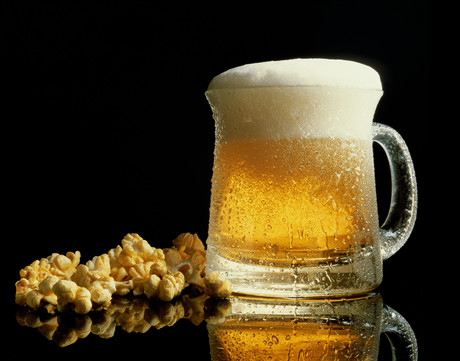Stable foams for beer or ice-cream needn't be a dream

Researchers have discovered a new method to design stable foams — their findings could make beer froth and ice-cream last longer (and even revolutionise construction materials such as concrete).
Quality and freshness in a beer can be anticipated if the beer has a good head of foam about 1.5 cm deep and containing 1,500,000 bubbles. But this foam is not stable — large bubbles become larger and smaller ones shrink and eventually disappear. This destabilisation process, known as ‘Ostwald ripening’, is particularly difficult to stop.
Surface-active components, such as certain proteins in beer foams, can typically prevent or at least slow down ripening by lowering surface tension, at least in the short term. But these components cannot ensure the long-term stability of the foams, as they only slow down the ripening process but cannot stop it once it has begun.
Jan Vermant, Professor for Soft Materials at ETH Zurich, and his group have taken a new approach to this foam stability problem and succeeded in quantitatively controlling the dissolution arrest of foam bubbles and formulating novel, yet universally valid strategies. These will help the food and materials industries to develop controlled and more effective stabilisers in order to prevent or stop Ostwald ripening.
The researchers found that particular particles act as a stabiliser and protect small bubbles against shrinkage by forming an irregular network structure at the bubble interface.
They were able to coat individual bubbles with a controlled amount of the particle stabiliser and then expose them gradually to changing pressure conditions in a mini pressure chamber, thus simulating Ostwald ripening.
Their experimental design allowed them to vary the number and nature of particles coating the bubble. Thus, they could relate the number of particles to the surface rheological properties. A surface yield stress was identified as the prime parameter that needs to be controlled. They found that even partially covered bubbles can be as stable as those completely covered with particles. As a result, the required quantity of stabiliser can be predicted accurately.
Furthermore, the researchers found that a coated bubble can withstand a much higher pressure than an uncoated one.
Although the researchers’ findings are general, they are also of specific benefit to the food industry. The scientists can now search for edible stabilisers to make foamy foods, such as ice-cream or even bread dough, last longer.
“We provide the food industry and other companies with development guidelines and quantification tools that they can use to develop new products,” said Vermant. And indeed, ice-cream helped to initiate this research, which was co-financed by Nestlé.
Stable foams are not only desirable for beer foam and ice-cream, they also play a part in concrete. Incorporating small, stable bubbles in concrete makes it better resist thaw-freeze cycles and makes it lighter.
Read more in the team’s paper published in PNAS; Beltramo PJ, Gupta M, Alickea A, Liascukiene I, Gunes DZ, Baroud CN, Vermant J. Arresting dissolution by interfacial rheology design. doi: 10.1073/pnas.1705181114
Six beverage trends predicted for 2026
Demand for customisation, 'protein-ification' and sustainable storytelling are some of...
Making UHT processing less intensive on energy
A nutritional beverages company was seeking a more sustainable way to produce UHT beverages using...
Tasty twist for chocolate alternatives
Food scientists develop two novel flavour-boosting techniques to transform carob pulp into a...








